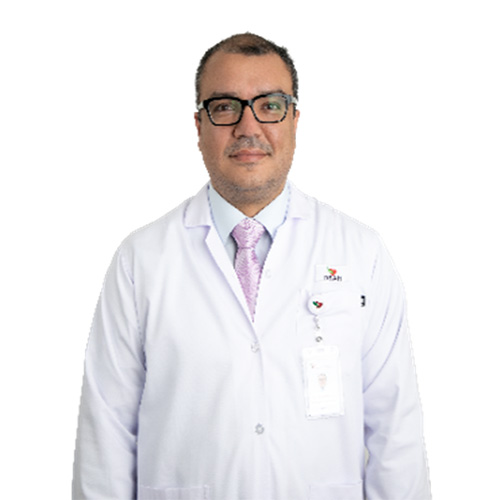Doctors in this department
What are you looking for?
Spine Surgery
Department
About
At the spinal unit, our main concern is to offer a value-based healthcare (VBHC) for our patients, putting them at the center of our practice, allowing an exceptional and unique care experience, as each of our patients participates in the decision of his treatment.
- We make decisions with our patients, not for them
- We offer care that reflects their values, not only ours
- We Focus on treating them, not their X-Rays.
- We offer a global and holistic analysis of the spinal column, and we use when indicated, minimal invasive surgery, endoscopic and microscopic surgery, as well as the most advanced techniques for exceptional outcomes.
- We always measure our outcomes, with a close follow up, in order to improve our indications, as we believe that we learn more from the patient than from books.
Services
1. Lumbar Discal herniation:
Usually, the patient feels low back pain and numbness radiating to the right or left leg. The treatment is most frequently conservative, but when surgery is necessary, we use Micro-invasive techniques, endoscopic techniques, laser techniques, and classical techniques. The patient is discharged within 24h
2. Cervical Discal herniation:
Usually, the patient feels cervical pain and numbness radiating to the right or left arm. Usually, the treatment is conservative, but when surgery is necessary we most frequently use the anterior approach technique, to insert a cage or artificial disc. The patient is discharged the same day or within 24h.
3. Spondylolisthesis:
It can be seen in young and elderly patients, with different degrees of severity. Typically, the patient feels low back pain, numbness, and weakness in the legs, sometimes resisting conservative treatment. So, depending on the clinical situation, treatment can be conservative, but when surgery is needed, we use the minimally invasive and endoscopic technique or classical posterior approach for decompression and fixation.
4. Lumbar and cervical canal stenosis:
a) Lumbar canal stenosis
Is due to a reduction in the diameter of the spinal canal, which usually occurs in elderly patients. This reduction causes a compression of the spinal cord and nerves. Usually, the patient feels low back pain, as well as pain and numbness in the legs, with difficulty walking, and weakness in the legs.
Treatment:
The aim is to decompress and sometimes fix the stenosed level(s) using the most advanced techniques, such as Micro-invasive and endoscopic surgery as well as classical approaches.
Decompression is realized through an anterior or posterior approach or a combined approach.
b) Cervical canal stenosis
Cervical canal stenosis is due to a reduction in the diameter of the spinal canal in the cervical spine, which usually occurs in elderly patients. This reduction causes a compression of the spinal cord and nerves. Usually, the patient feels cervical pain, as well as pain and numbness in the arms, weakness in the motor power of the arms, even difficulty to walk, and imbalance.
Treatment
The aim is to decompress the stenosed level(s) using the most advanced techniques, such as Micro-invasive and endoscopic surgery as well as classical approaches. Decompression is realized through an anterior or posterior approach or a combined approach.
5. Spinal deformities: Scoliosis
Scoliosis is a lateral deformity of the spine. It can be thoracic, lumbar, thoraco-lumbar, or double thoracic. it is seen at all ages; Scoliosis can be un-esthetic, painful, and can evolve to become very severe if not stopped after a critical degree.
The treatment can be conservative or surgical, depending on the degree of the deformity and the age of the patient. (show photos of scoliosis, treated ortho or surgery). When conservative, we generally use bracing, and when surgery is decided, we frequently use a posterior approach to obtain a reduction of the deformity.
Treatment
At DSAH we always choose the treatment with the patient, he is the center of our decision, we work hand in hand with the patient and his family to offer the best technical solutions.
Usually, conservative treatment is our first choice, and when needed the indication for minimally invasive surgery is the first option.
The interest of Minimal invasive surgery is to reduce the hospital stay, risk of infection, less post-operative pain, less Muscle impairment, and more advantages that the patient will decide to accept or not.
In all cases, we do our best to ensure security safety, quality, patient satisfaction, and an unmatched patient experience throughout the whole cycle of care.



